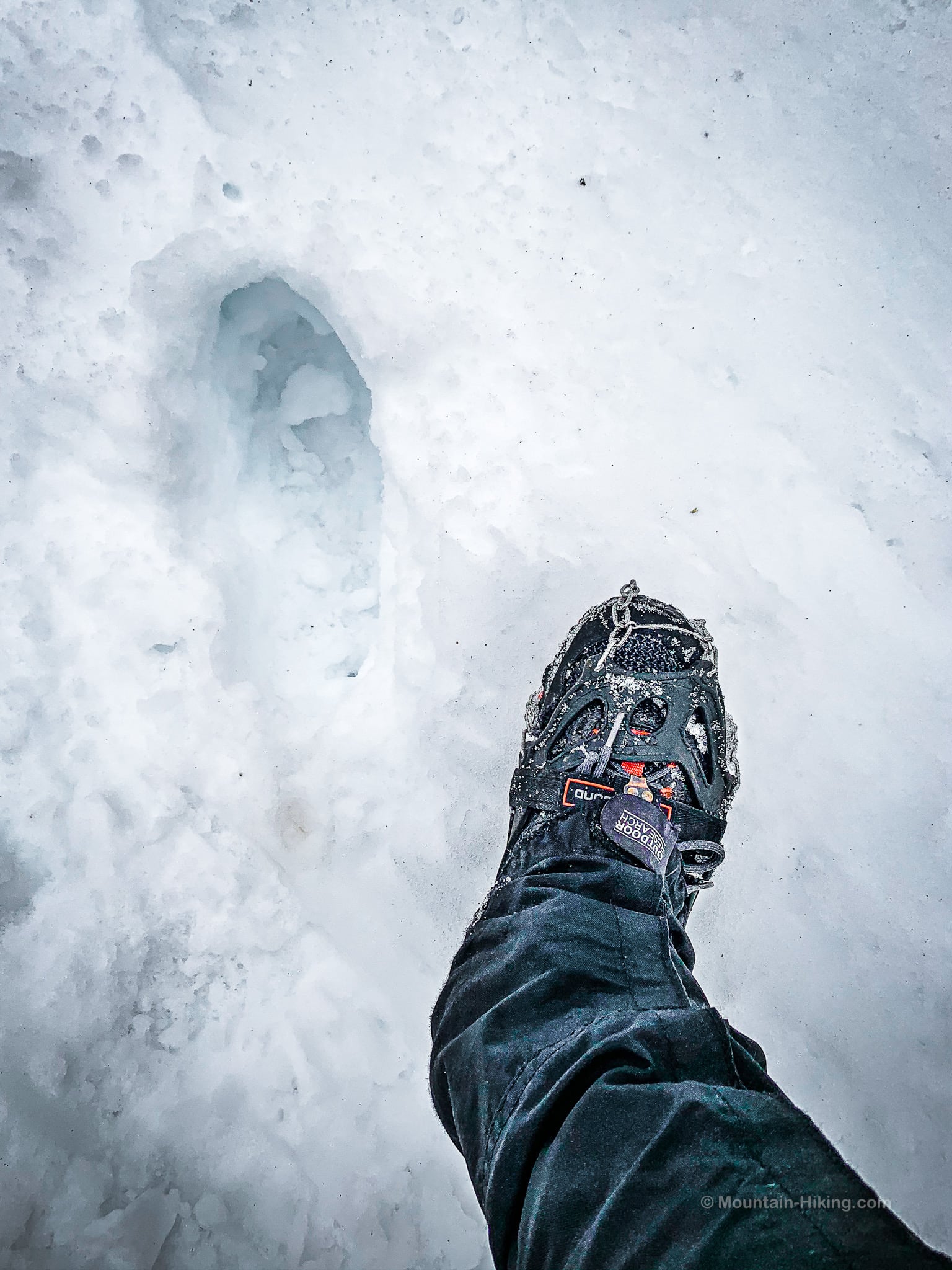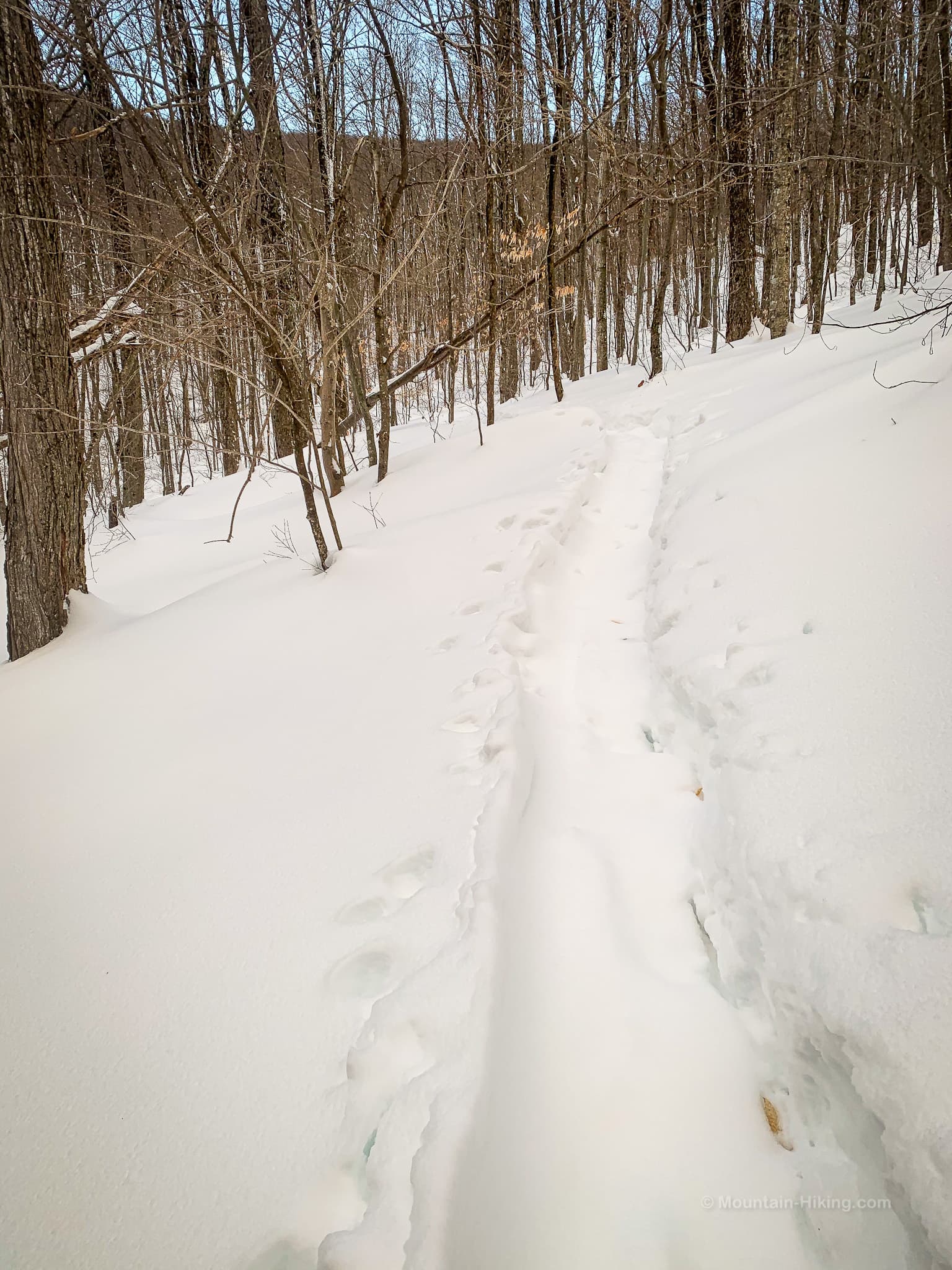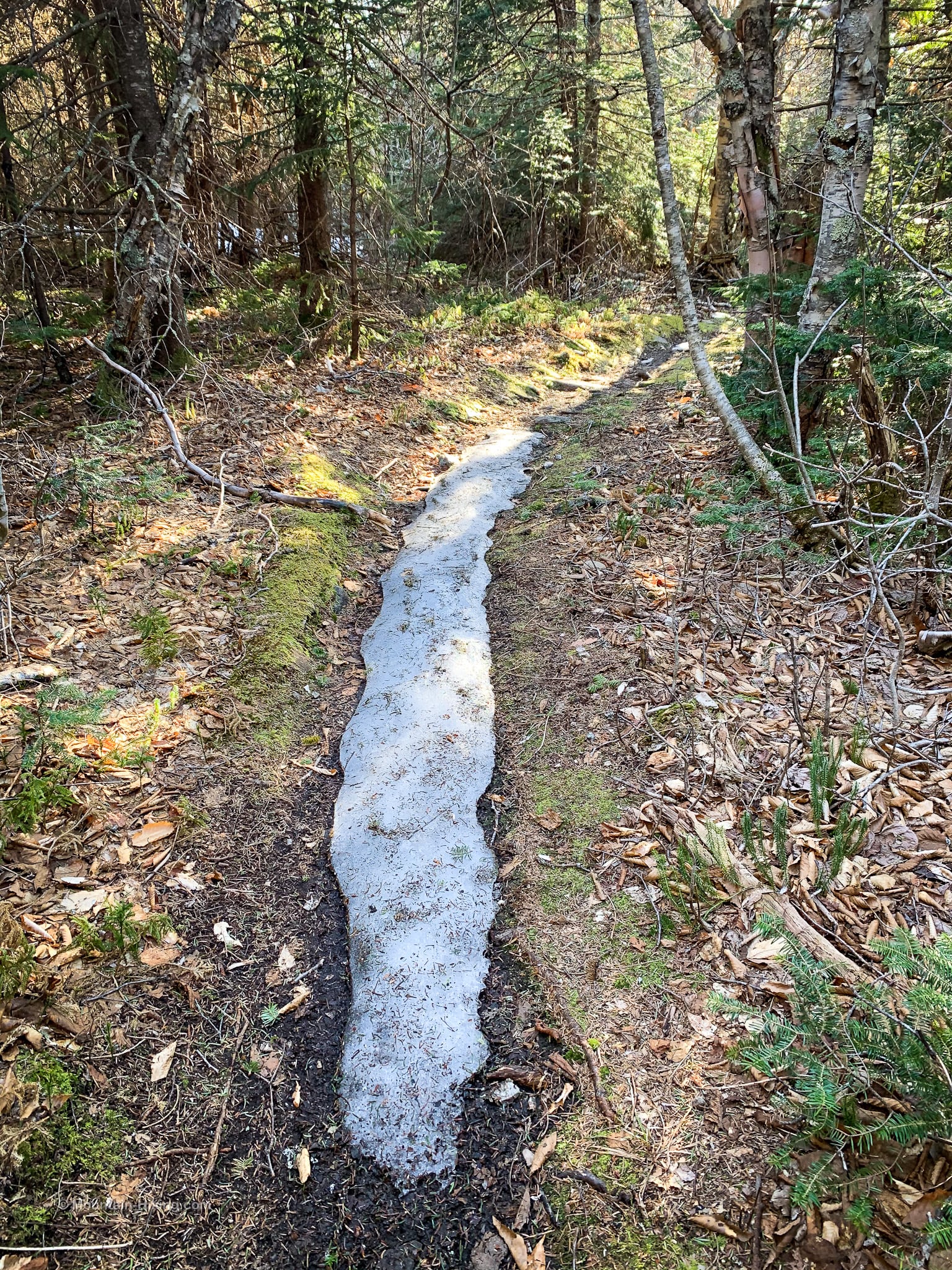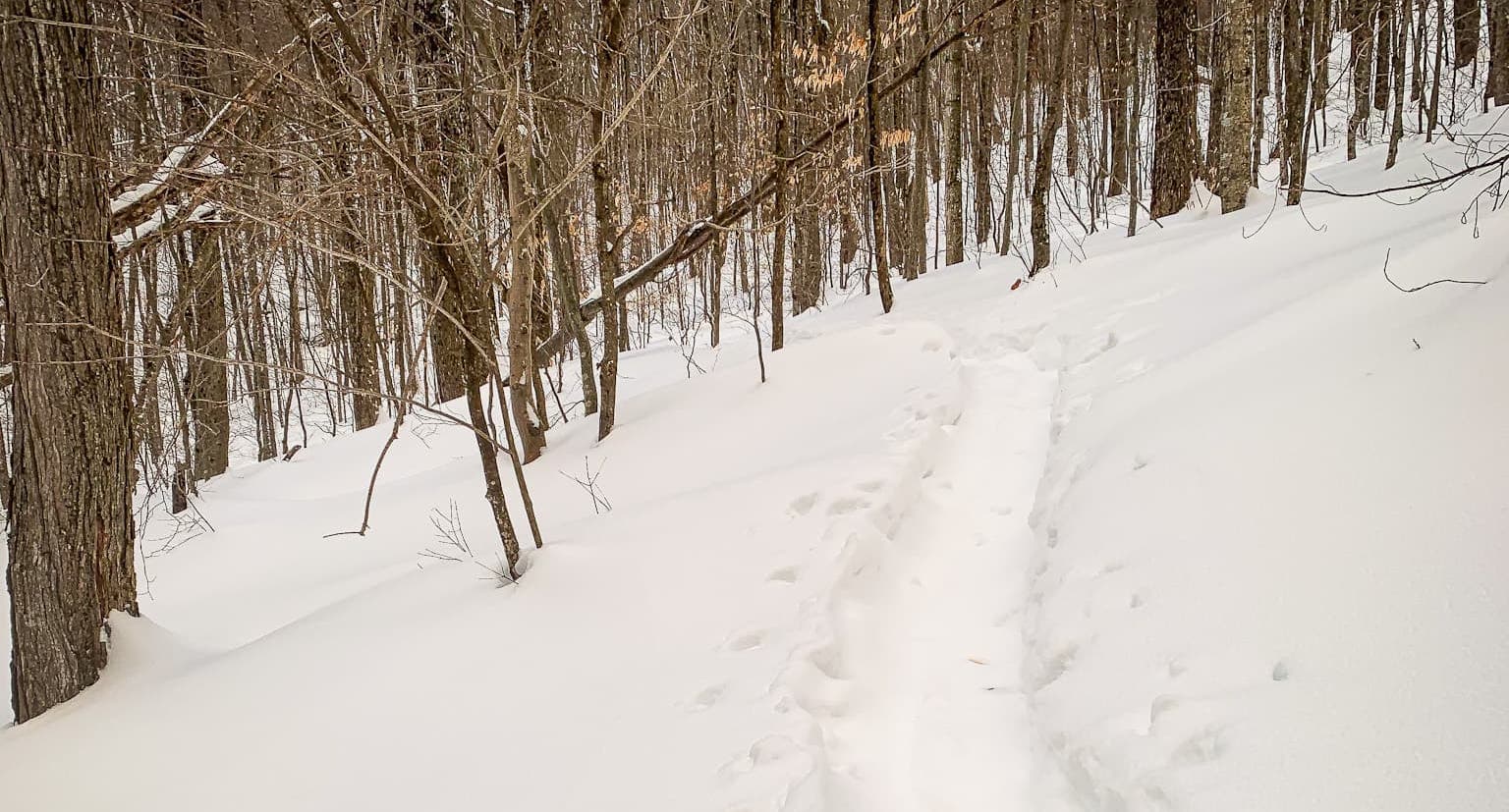Disclosure: This content may contain affiliate links. Read my disclosure policy.
Winter Trail Terms Explained
Once the cold weather sets in, you’ll start to see and hear these winter trail terms online in forums and social posts. Here’s what they all mean.
Three Season Gear
Three season gear typically means clothing and camping equipment not rated for the severe cold of winter.
Basically, it’s the gear you’ll use in spring, summer and fall.
Most outdoor gear companies have a dedicated range of products geared specifically for winter. These ranges offer extra insulation (for clothing) but also extra structural strength (for tents and such) to get you through the wind, cold and snowfall that arrives in the cold months.
Traction: Microspikes, Snowshoes, Crampons
After any cold weather — any ice or snowfall — you need extra traction for your hiking boots or hiking shoes.
In most cases, this means microspikes and snowshoes, but sometimes includes mountaineering crampons. It specifically does NOT mean Yaktrax, which are not suited to mountain hikes.
Posthole
A posthole is what happens when you try to walk in deep snow without snowshoes — you sink down, sometimes up to your waist and then, as you work to pull your leg out, you leave a massive hole in the powder.
This is exhausting. You simply won’t be able to hike for more than a short distance.
More importantly, your postholes stay in place waiting be covered up with a light snowfall and set as a booby trap for future hikers.

If you’ve ever unexpectedly sunk into a posthole it’s a shocking feeling. It can break an ankle or even a leg.
Never hike in snow deeper than 8″ without snowshoes. (A posthole is also someone who leaves a posthole.)
- More about post-holing
- A helpful article about post-holing
Bare-Boot
Bare-booting refers to hiking sections of a route in winter without any traction (microspikes or snowshoes.) You may opt to bare-boot in lower elevations where snow or ice cover doesn’t indicate traction or snowshoes are necessary.
Sometimes, only the upper part of a mountain requires additional traction.
Break Trail
Breaking trail is the exhausting process of hiking through deep snowfall for the first time.
Typically, breaking trail is done in groups, with a pretty quick rotation schedule so the person in front can be relieved regularly.
After heavy snowfall, the work is so hard it can take several hours for a team to break a single mile of trail.
Trench
A trench is the narrow strip of compacted snow is left in the wake of breaking trail. See photo. This is usually very walkable in show-shoes, which is the correct trail etiquette.

Step off the trench and you’ll immediately feel the difference.
Monorail
Mostly seen in spring, a monorail is a narrow strip of ice and/or snow, usually running down the middle of a trail, that you’ll find after most of the less-compacted snow has melted away.

Here’s what it sounds like to walk on monorail in microspikes.
This is partly why we carry microspikes until as late as June. Without traction, you have to walk either side of a monorail — where it’s usually a mud-fest.
Spruce Trap
Also known as a tree well, a spruce trap is the area under a tree’s branches that gets far less snow than the area immediately around the tree.
Effectively, it’s a pit you can fall into. And become trapped in. And suffocate. And die.
The problem is that hikers can trip or slip, and then tumble into these cavities head first.
They can be very difficult to climb out of. Your gear may become entangled in branches. You may suffer a concussion or a dislocation. More snow can collapse into the well to suffocate you. And so on.
It can take several minutes to climb out of a spruce trap.
This old VFTT thread has some options for how to free yourself from a spruce trap.
Read More
Winter hikes are unbelievably beautiful — but they do require some extra knowledge and gear.
- Read Winter Hiking Gear: Survive & Thrive in the Cold
- Grab a free Winter Hiking Checklist (downloadable PDF)
Get full access…
Get instant access to the full version of this site and enjoy great supporter benefits: full galleries, full trail notes, early access to the latest content, and more.
Hot on the website right now…
Follow for more…
Follow my @TotalCatskills content on Instagram for regular hiking inspo and safe, inclusive community.

